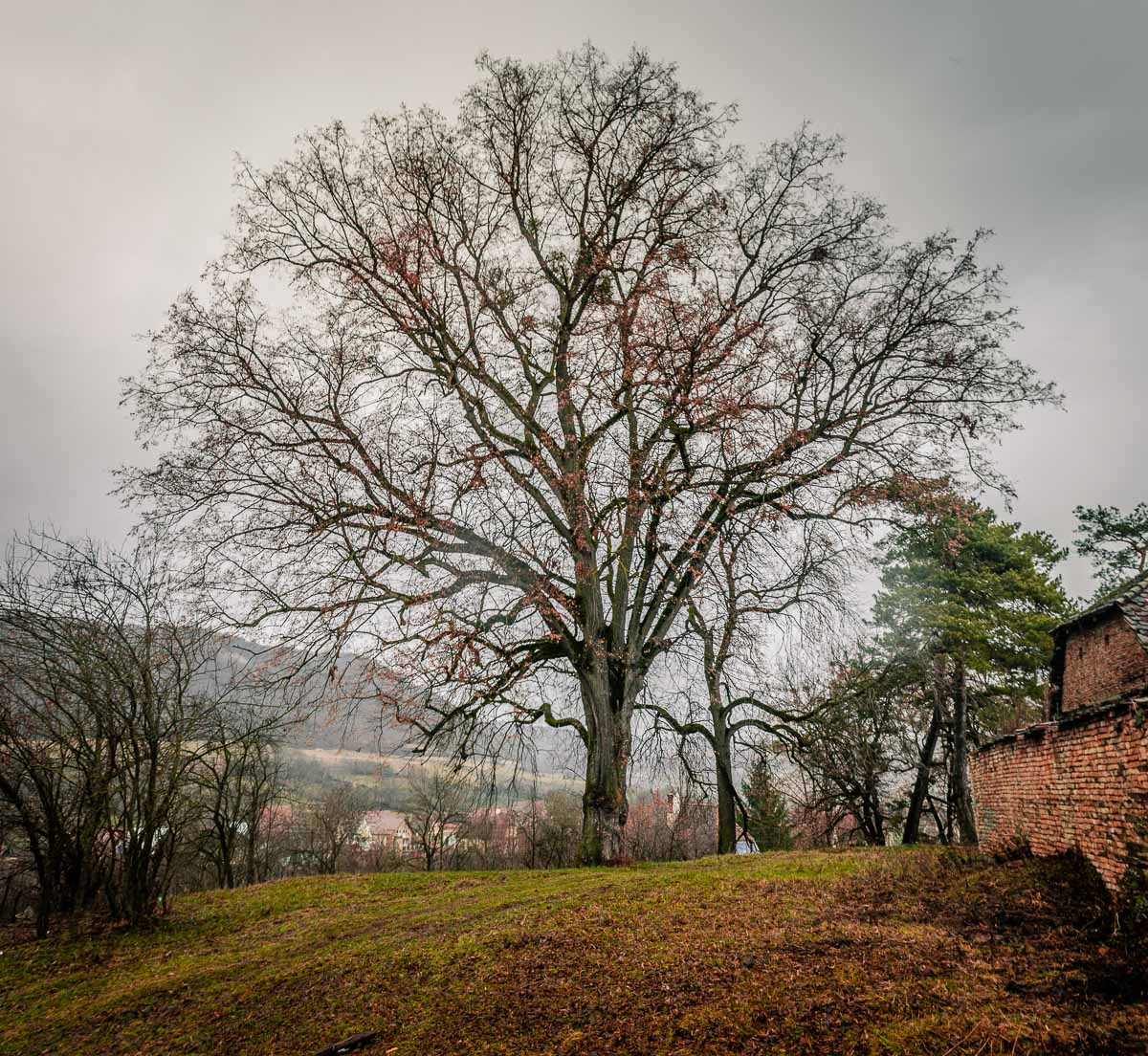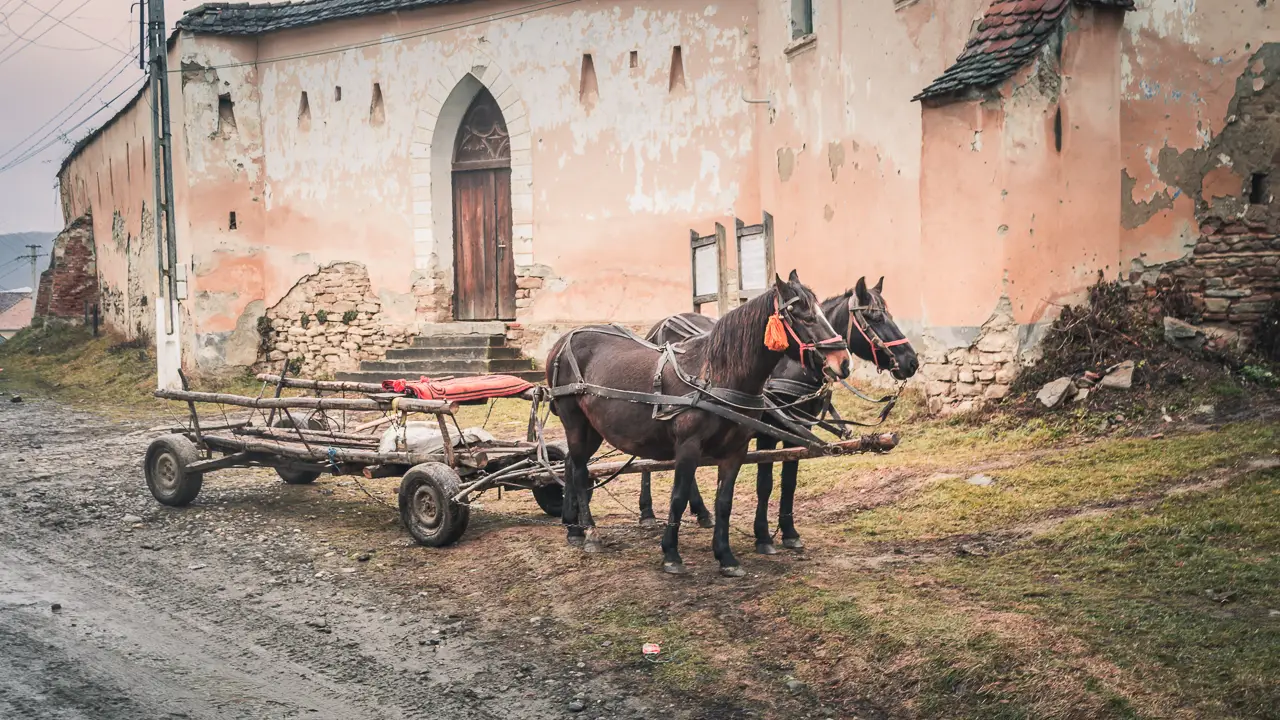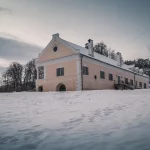The village of Daia is located in Mureș County, Romania. It is a small Transylvanian village that belongs to the commune of Apold, which is about 8 km away. To reach Daia, you’ll need to drive along a dirt road, adding to its remote charm.
The Evangelical fortified church in Daia
In Daia, you’ll find the historic Evangelical fortified church, built in the 15th century in the Gothic style. What makes this church especially unique is that its tower was constructed outside the fortification walls, separated by a dirt road. This is unusual because, in most fortified churches of Transylvania, all key buildings were enclosed within the fortification walls for protection during enemy attacks.
Unfortunately, the exterior of these historic buildings is in poor condition. Over the years, large cracks have developed in the church tower, affecting its structure and causing it to tilt. Despite its current state, this church remains an architectural gem, and there’s hope that one day it will be restored to its former glory.




After spending some time near the Evangelical church and exploring the quiet village, it was time to head back to Apold. The weather that day—cold, gray, and rainy—shortened our visit. By the time we decided to leave, it had even started to rain.
Other important places to visit nearby?
About 23 km from Daia is the Sighisoara Medieval Citadel, a place I highly recommend visiting. This well-preserved fortress is full of history and charm, making it a must-see destination in Transylvania.
On your way to Sighisoara, you can make a short stop in Apold, the next village along the route. Here, you’ll find the Lutheran Fortified Church, another fascinating example of Transylvanian history and architecture.




Leave a Reply